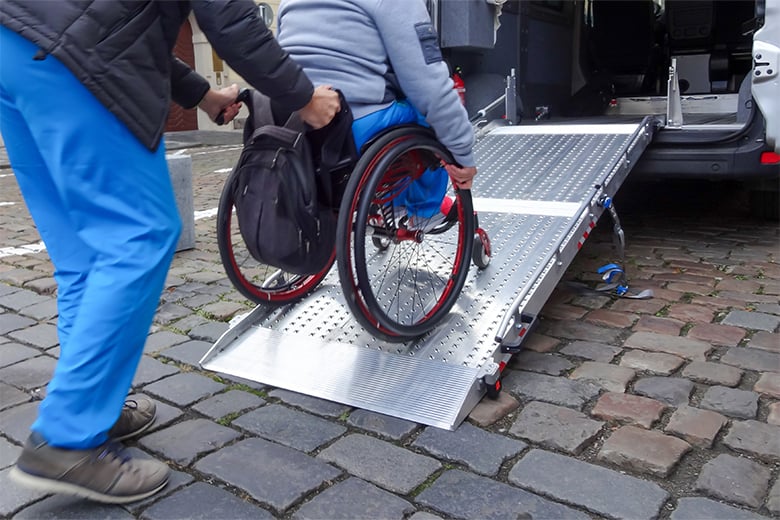According to the Rehabilitation Engineering and Assistive Technology Society of North America (RESNA), motor vehicle crashes are one of the leading causes of death for Americans ages 3 through 33. However, wheelchair users who rely on medical transport for everyday travel are especially susceptible to catastrophic injury in a motor vehicle accident.
Unlike non-disabled passengers, wheelchair users can even suffer serious injuries in transit without a collision occurring. Injuries resulting from sharp turns, abrupt or sudden stops, or simply falling down while the vehicle is in motion are much more common than you think.
In fact, in a recent cross-sectional study of 336 participants, more than one-quarter of wheelchair users reported sustaining at least one injury while using motor vehicle transportation in the previous three years. This was mainly due to being improperly secured in their wheelchair while in transit. Since wheelchair users rely entirely on medical transport services to travel from places such as doctor visits, school, and shopping, they are repeatedly at risk of injury or death at the hands of their provider.
The Evolution of Wheelchair Transport Safety Standards
The ideal safety practice for wheelchair passengers is to transfer into a manufacturer-installed vehicle seat and use the vehicle’s crash-tested occupant restraint system. However, things such as the inability to transfer or the need to rely on external support from the wheelchair can all pose serious risks to passengers.
It’s important that wheelchair users remain secure in their chairs throughout their trip by using wheelchair Tiedowns and Occupant Restraint Systems (WTORS). As initially outlined in 1996, the WTORS standard is a minimal level of crash safety required for wheelchair-seated passengers. It involves using an effective wheelchair securement system and a properly positioned, crash-tested pelvic and shoulder belt restraint. The required performance of a WTORS includes four-point strap-type tie-downs, docking systems, and potential future systems, according to RESNA.
RESNA further tightened the standards for wheelchairs used as seats in motor vehicles in 1999. Wheelchairs that comply with RESNA Wheelchair Standards Volume 1 Section 19: Wheelchairs Used As Seats in Motor Vehicles are now commonly referred to as WC19-compliant. WC19-compliant or transportation-ready wheelchairs reduce user error in securing four-point, strap-type tie-downs. In addition, they demonstrate that they can stay secure and provide adequate support, include manufacturer instructions, and are labeled so they can easily be identified.
While advancements in technology help to improve wheelchair safety and security, accidents still happen. If you suspect that your loved one was injured in a medical transport accident due to the provider’s negligence, trust your instinct and hire a medical transport accident attorney as soon as possible.
We Fight to Hold Negligent Medical Transport Providers Accountable. Contact Our Firm Today.
When your loved one is injured or loses their life in a medical transport accident, the experience could be shocking and hard to fathom. Unfortunately, these incidents happen more frequently than you think, with the paratransit provider at fault. At Henson Fuerst, our experienced and compassionate medical transport attorneys go to great lengths to bring these cases to justice and hold the medical transit companies accountable.
Contact Henson Fuerst by filling out and submitting a contact form below detailing your situation or calling our office toll-free at 919-781-1107 for a free legal consultation today.
